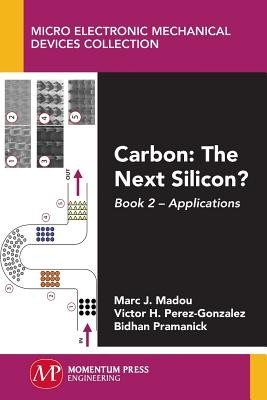
- We will send in 10–14 business days.
- Author: Marc J Madou
- Publisher: Momentum Press
- ISBN-10: 1606508830
- ISBN-13: 9781606508831
- Format: 15.2 x 22.9 x 1.2 cm, minkšti viršeliai
- Language: English
- SAVE -10% with code: EXTRA
Reviews
Description
Nuclear Magnetic Resonance (NMR) and Electron Spin Resonance (ESR) spectroscopies are well-known characterization techniques that reveal the molecular details of a sample non-invasively. The authors discuss how NMR can provide useful information on the microstructure of carbon and its surface properties and explain how C-MEMS/C-NEMS technology can be explored for building improved NMR microdevices. The authors highlight the manipulation of fluids and particles by dielectrophoresis and the use of carbon electrodes for dielectrophoresis in Lab-on-a-Chip. The use of these electrodes in sample preparation through electrical polarization of a sample for identification, manipulation, and lysis of bioparticles is also discussed and they introduce a new generation of neural prosthetics based on glassy carbon micromachined electrode arrays. The tuning of the electrical, electrochemical and mechanical properties of these patternable electrodes for applications in bio-electrical signal recording and stimulation, and results from in-vivo testing of these glassy carbon microelectrode arrays is reported, demonstrating a quantifiable superior performance compared to metal electrodes.
EXTRA 10 % discount with code: EXTRA
The promotion ends in 21d.08:45:13
The discount code is valid when purchasing from 10 €. Discounts do not stack.
- Author: Marc J Madou
- Publisher: Momentum Press
- ISBN-10: 1606508830
- ISBN-13: 9781606508831
- Format: 15.2 x 22.9 x 1.2 cm, minkšti viršeliai
- Language: English English
Nuclear Magnetic Resonance (NMR) and Electron Spin Resonance (ESR) spectroscopies are well-known characterization techniques that reveal the molecular details of a sample non-invasively. The authors discuss how NMR can provide useful information on the microstructure of carbon and its surface properties and explain how C-MEMS/C-NEMS technology can be explored for building improved NMR microdevices. The authors highlight the manipulation of fluids and particles by dielectrophoresis and the use of carbon electrodes for dielectrophoresis in Lab-on-a-Chip. The use of these electrodes in sample preparation through electrical polarization of a sample for identification, manipulation, and lysis of bioparticles is also discussed and they introduce a new generation of neural prosthetics based on glassy carbon micromachined electrode arrays. The tuning of the electrical, electrochemical and mechanical properties of these patternable electrodes for applications in bio-electrical signal recording and stimulation, and results from in-vivo testing of these glassy carbon microelectrode arrays is reported, demonstrating a quantifiable superior performance compared to metal electrodes.


Reviews